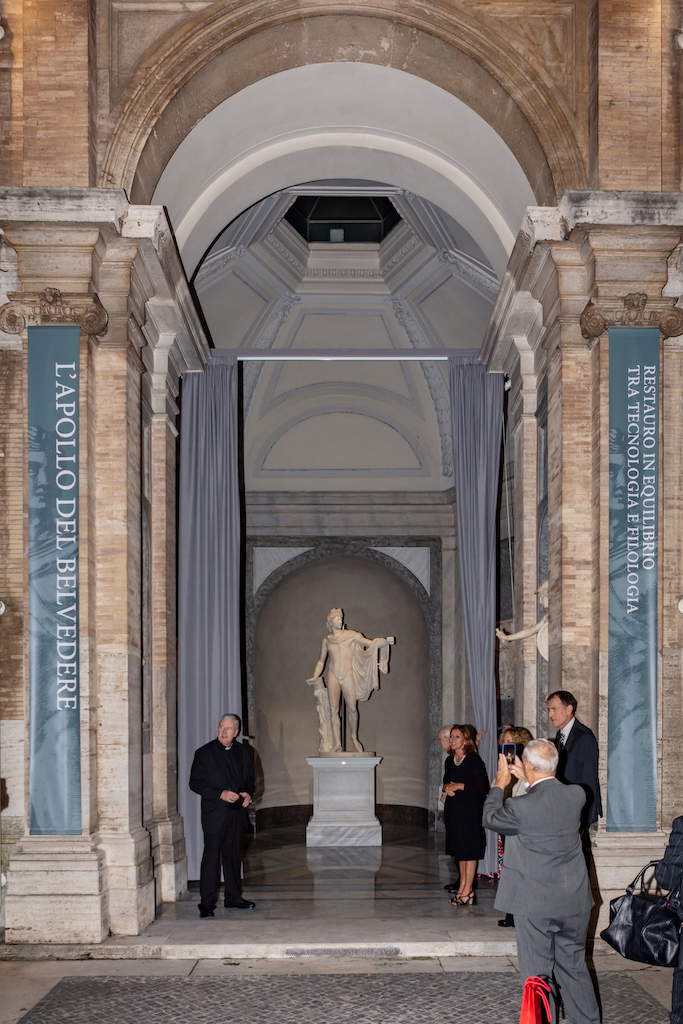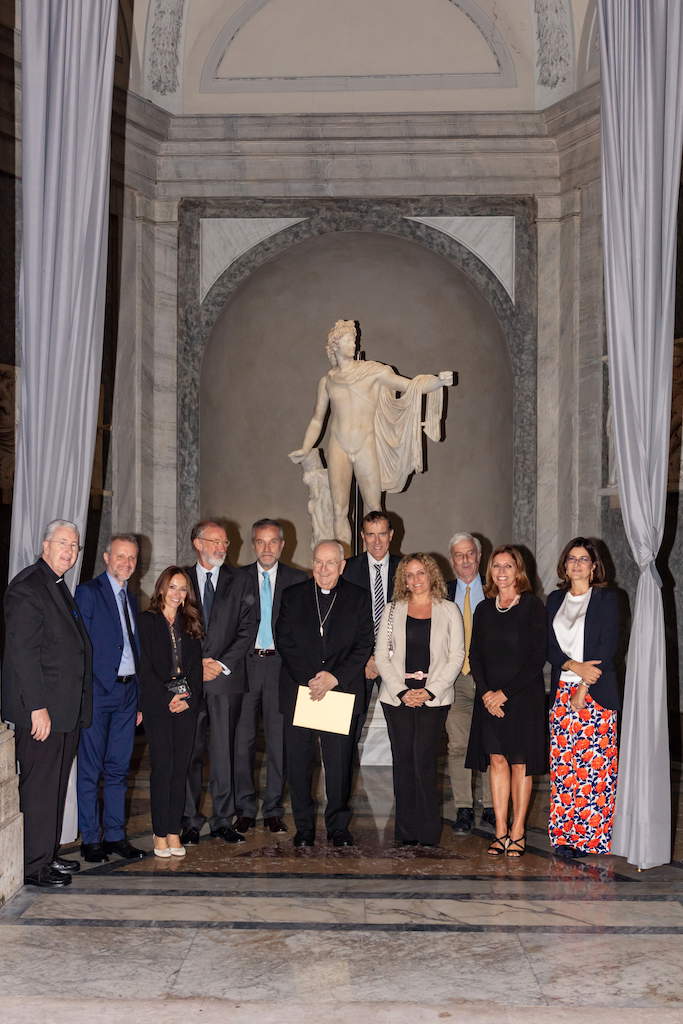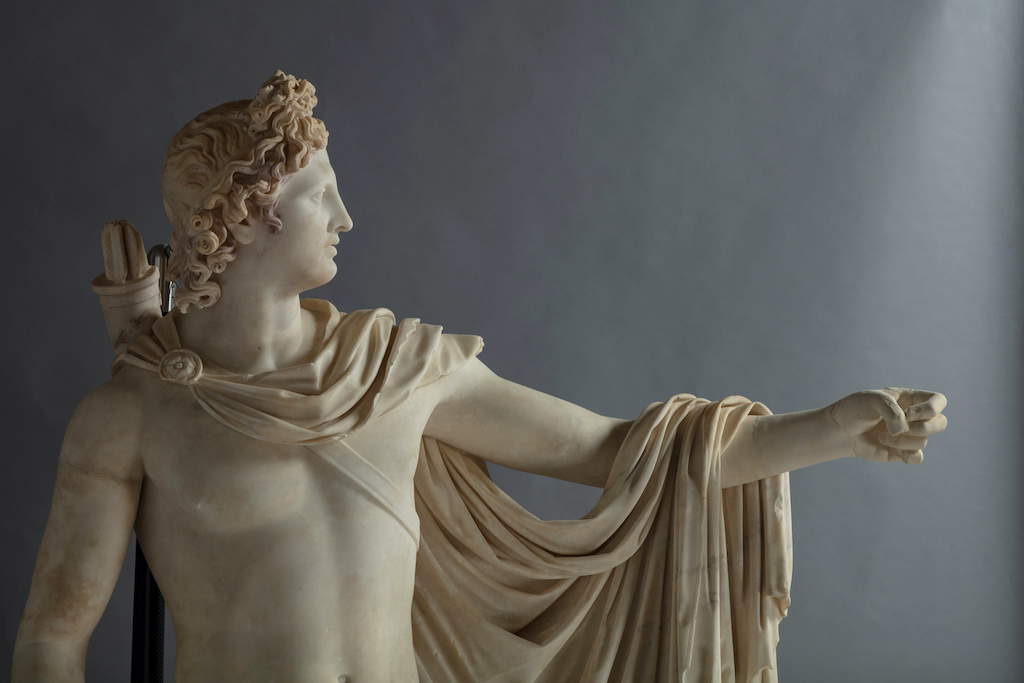After five years of restoration, the Apollo of the Belvedere returns to the Vatican Museums
After a five-year wait, the general public can finally admire once again theApollo del Belvedere, one of the Vatican Museums’ most celebrated sculptures, returned to all art lovers around the world after a long and complex restoration. The intervention, which lasted nearly five years, was interrupted by the pandemic and involved the use of the most advanced modern technologies alongside a rigorous philological approach to ensure the work’s future stability without compromising its beauty.
The Apollo of the Belvedere, discovered in 1489 in the ruins of a Roman domus on the Viminal Hill, was brought to the Vatican at the behest of Pope Julius II, who placed it in the Cortile del Belvedere to celebrate the continuity between ancient Rome and his pontificate. Considered for centuries a symbol of artistic perfection and a source of inspiration for generations of artists and men of letters, the masterpiece has undergone a delicate restoration to ensure its preservation for the future.
During the unveiling ceremony, held Oct. 14 in the Vatican Museums’ Octagonal Courtyard in the presence of Cardinal Fernando Vérgez Alzaga, President of the Governorate of the Vatican City State, and Barbara Jatta, Director of the Vatican Museums, the masterpiece was finally unveiled. The restoration of the work was also made possible thanks to the fundamental contribution of the Patrons of the Arts in the Vatican Museums, who supported the project financially.
Barbara Jatta stressed that this restoration is an expression of the path that the Vatican Museums intend to follow: combining tradition and innovation, with an eye always turned to new technologies. The sculpture, exhibited for centuries in the open air, suffered structural damage, especially to the ankles and knees, which made intervention urgent. The restoration involved the use of cutting-edge technologies to solve these problems, as explained by the head of the Lapidary Materials Restoration Laboratory, Guy Devreux.
The key element of the intervention was the insertion of a support bar made of carbon fiber and steel, attached to the base and back of the statue, which allows the weight of the sculpture to be relieved by about 150 kilograms. This support, completely invisible to the public, ensures the stability of the statue and extends its life without compromising its aesthetic enjoyment. Such a solution had already been employed in the past by Antonio Canova, when the statue had returned to Rome after being stolen by Napoleon and taken to Paris.



The restoration also provided an opportunity for a series of scientific insights into the sculpture. During the cleaning phase, the presence of traces of purplish polychromy was discovered among the Apollo’s curls, testifying to the preparation for gilding the hair, a surprising detail that adds a new dimension to the understanding of the work. Fabio Morresi, head of the Cabinet of Scientific Research, pointed out that the restoration was a true “first aid” intervention, made necessary by a structural anomaly detected during a monitoring in 2019, which made the intervention immediately necessary: a movement, imperceptible without the tools, noticed on Christmas Eve of that year.
Claudia Valeri, curator of the Department of Greek and Roman Antiquities at the Vatican Museums, explained that the restoration also included the replacement of the Apollo’s left hand, reconstructed in the 16th century by Giovannangelo Montorsoli, with a plaster cast found in the ruins of the imperial palace at Baia in the 1950s. The cast made it possible to restore the sculpture’s hand more proportionate and faithful to the original. This philological intervention, which is entirely reversible, gave the statue a more natural and light posture, bringing it closer to the original idea conceived by the Greek artist.
The Belvedere Apollo, dated to the second century AD and considered a Roman copy of a Greek original attributed to Leochares, depicts the god at the moment when he has just shot an arrow. His dramatic posture, daring for a marble work, was originally conceived for a bronze sculpture, much lighter and better suited to support the dynamics of the gesture.
The restoration was also a challenge for the Vatican Museums team, which faced difficult times, especially due to the forced suspension of work during the pandemic. However, the final result is a source of great pride for the team, which was able to return to the public a masterpiece in perfect condition. The resumption of restoration was possible thanks to the support of the Patrons of the Arts, whose contributions made it possible to complete a project that required not only great technical expertise, but also artistic and historical sensitivity.
Despite the reopening to the public, monitoring of the statue will continue. Fabio Morresi announced that structural and chemical checks will continue to ensure that the work remains in optimal condition. Future hypotheses include a permanent covering of the Octagonal Courtyard to protect the statues from the weather and ensure the preservation of the restoration work.
The restoration of the Belvedere Apollo represents not only the preservation of a work of art, but also an important opportunity to study and reflect on the balance between technological innovation and respect for tradition. As Barbara Jatta said, this project reflects the Vatican Museums’ mission to preserve and share its artistic heritage with the world so that it will continue to inspire future generations.
“When, in December 2019, the monitoring to which the sculpture was subjected revealed an anomaly, the concern was immediate,” Cardinal Vérgez Alzaga remarked at the unveiling of the Apollo. “The world-famous sculpture was at risk and emergency safety was immediately taken, however, no one suspected that a few weeks later the world would be overwhelmed by the pandemic. By early March, the tragic nature of the moment became evident and a surreal and long-suspended time began. Even the Apollo had to wait for the return, little by little, of a condition of normality [...] It is therefore with renewed joy that this evening we hand back to the eyes of the world a shining Apollo, radiant as Homer’s, a masterpiece of art and ingenuity that we hope will still defy time for centuries to come.”
 |
| After five years of restoration, the Apollo of the Belvedere returns to the Vatican Museums |
Warning: the translation into English of the original Italian article was created using automatic tools. We undertake to review all articles, but we do not guarantee the total absence of inaccuracies in the translation due to the program. You can find the original by clicking on the ITA button. If you find any mistake,please contact us.




























